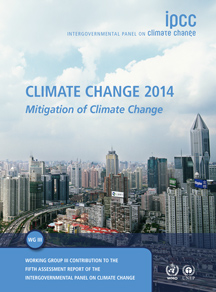The world's top scientists have released the most important projections and action plan for global warming in history. Here are the top five actions from the IPCC Climate Action Plan.
1) The world must phase-out of fossil fuels and a shift to clean energy investments. While global emissions are still growing, some modern and innovative economies have already beaten the trend - moving from dirty fossil fuels to renewable energies, proving it can be done
2) Substantial shifts in annual investment flows between 2010 and 2029 are required, i.e. cuts in fossil fuel investments of USD 30 billion per year, while more than doubling the investment in renewables. Delaying mitigation action now implies higher costs of action later, says the IPCC, while the co-benefits of actions taken now can outweigh their costs.
3) Urban areas are expected to triple by 2030. This is directly relevant to climate change as urban areas account for roughly 70% of global energy use and global energy-related CO2 emissions. Since much of this urban infrastructure will be built in the next 20 years, there is massive potential for smart infrastructure choices, combined with low energy codes in new buildings, retrofits of the existing housing stock and more widespread use of already existing technologies and efficiencies.
4) Forests, agriculture, and land use could become a net CO2 sink by the end of the century. They currently account for about quarter of global greenhouse gas emissions, and could become a net CO2 sink due to successful afforestation efforts, reduced deforestation, and better agricultural practices.
5) Energy efficiency offers massive potential and multiple benefits, as well as the need for improved demand side management. Of course it's vital to produce energy in a more sustainable way, but saving energy in the first place and avoiding unnecessary waste is even better.
And the report includes a surprisingly hopeful note:
The IPCC is clear that we can still keep global warming below the danger-threshold of 2 degrees C compared to pre-industrial levels, if we make bold and quick decisions towards deeper and faster cuts in emissions. Even keeping warming to 1.5 degrees C, as many developing nations have been urging, is not ruled out.
Faith communities can make a difference. Did you know religious institutions are among the world's largest landholders? Faith communities own 7-8% of the habitable land surface of the planet, including 5% of commercially run forests worldwide.

No comments:
Post a Comment